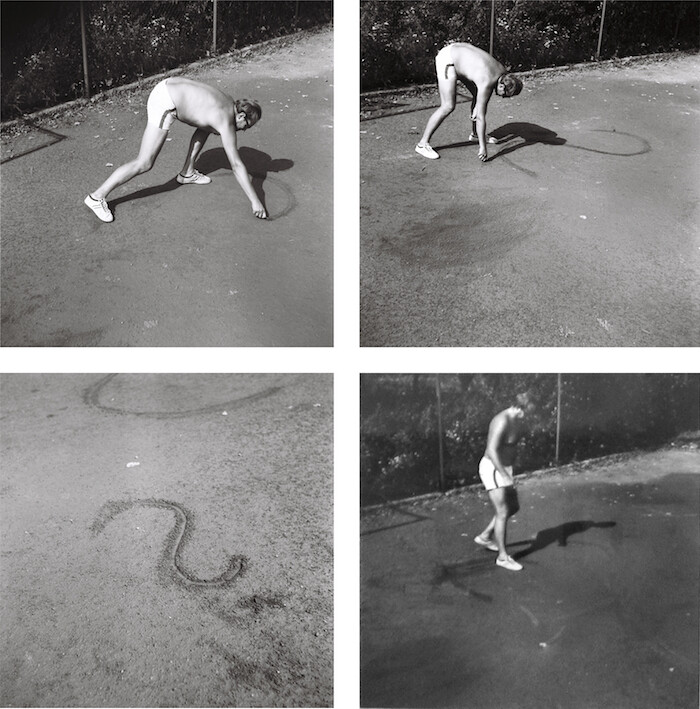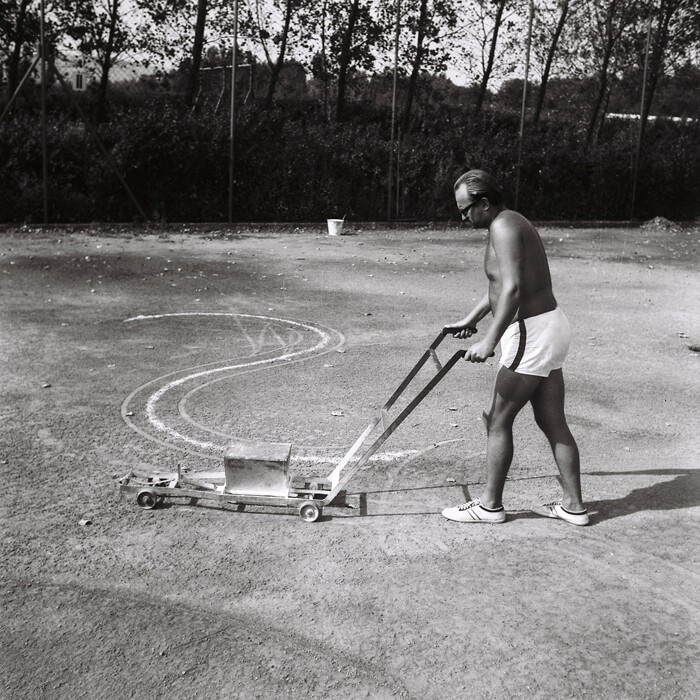Categories
Subjects
Authors
Artists
Venues
Locations
Calendar
Filter
Done
February 27, 2018 – Review
Július Koller’s “Subjektobjekt”
Max L. Feldman

Július Koller’s “anti-happenings” are reflexive practices, acting out a lived situation—relating mostly to Czechoslovakia’s repressive, post–Prague Spring “normalization” period between 1969 and 1987 and the limits of artistic activity at the time. Documenting silly or banal everyday activities, including ping-pong games, taking photographs of groups standing in a question mark (his signature symbol), or simply painting and teaching, Koller turns being together with others into Subjektobjekt, a position of personally and artistically transformative “subjective objectivity,” raising collective awareness of the relation between private life and the official public space monopolized by the regime.
The key anti-happening in the exhibition, which stretches across three floors and still displays only a tiny fraction of Koller’s vast output, is the black-and-white photographic grid Question Mark 1-4 (1969). Showing a shirtless Koller etching a question mark into the clay of a tennis court with his finger, we see two themes converge: for Koller, tennis is a non-artistic activity requiring fair play and obedience to the game’s predetermined rules, while the question mark symbolizes free, democratic communication. This anti-happening then becomes a quietly anti-authoritarian demonstration of the value of intersubjective know-how, granting others—friends, tennis partners, fellow citizens—the same status we would have them grant us.
The anti-paintings …
May 17, 2013 – Review
“U.F.O.-NAUT JK (Július Koller) orchestrated by Rirkrit Tiravanija”
Simon Rees

Anyone who grew up in the 1970s and watched the Children’s Television Network/PBS educational series Sesame Street was subliminally prepared for the gamut of conceptualism in (contemporary) art. No character prepared one better than the “Mad Painter,” who popped up in the unlikeliest of places in his Chaplinesque bowler hat and signature striped shirt to paint the “number of the day” on an unsuspecting surface or person: bald or balding pates were regularly and hilariously victimized. They always realized their fate all-too-late and then chased the Mad Painter out of the frame, oftentimes with the reel sped up to look like the Keystone Cops, or, again Chaplin, to the accompaniment of a vaudevillian or ragtime/honky-tonk piano. While Július Koller (1939–2007) was making his “U.F.O.-NAUT” works long before the Mad Painter ever went on air, whether Rirkrit Tiravanija’s channeling of Koller performs a double-entendre of channeling the Mad Painter is the question. Tiravanija, born in 1961, is certainly of an age and spent time growing up in Canada where Sesame Street was a television staple in the 1970s. This exhibition is essentially a re-presentation and re-framing of Koller’s “U.F.O-NAUT” works by Tiravanija—to claim a sympathetic conceptual predecessor.
The Mad Painter comes to …